“Hi Rogelio (Rogelio Enriquez), my wife and I are going to spend five days in Asturias. Any restaurant we should not miss?” It does not have to be Asturias, of course. Substitute Loire Valley, San Francisco, Galicia, Puglia, Piemonte and what not. My wife and I always rely on our trusted friends, such as Rogelio; on the chefs of restaurants we value; on the native and discerning palates whom we meet accidentally while dining in favorite restaurants; and on our own intuition. The restaurants that we pick hardly coincide with those highlighted in the guide. In fact, we are often disappointed when we dine at three star restaurants because it is often the case that no single dish stands out. Moreover, the cuisine seems to follow a formula proven to be effective with Michelin inspectors, but lacking in character.
This was not always the case: I started serious dining out in 1986 when I had a fellowship to study for a year in France and lunch menus in three star restaurants were affordable. Many meals at Jamin – Robuchon, a single meal at L’Oasis – Outhier, an incredible meal at Alain Chapel, an excellent meal at Vivarois, a feast at L’Ambroisie – Pacaud when it had two stars, and a trip to Lausanne where I dined for the first and last time at Girardet (who made cooking look so easy in the sense that Messi goals look too easy to score!). All of these meals left indelible marks in my then-young palate.
L’Ambroisie is the only one of these great restaurants that is still in existence, and Pacaud is still cooking some, what the French call, “plats d’anthologie”, i.e. historically significant dishes (He also refuses to offer a menu degustation). I bet none of these above named restaurants would have received three stars from today’s cooking school graduate inspectors who work for Michelin. Yet, do not think that I have a jaded palate and am merely nostalgic about old good times. On Gastromondiale, I wrote eulogies to Can Roca when they had two stars and to Mugaritz, circa 2005, when Aduriz’s cuisine was still rooted in tradition. I was ecstatic when I ate the first time at elBulli in 1998. I love modern and innovative restaurants, provided that they rework and render a traditional recipe more delicious, or if they simply invent a memorable taste, such as “tuetano con caviar with corn“, which was one of Adria’s creations.
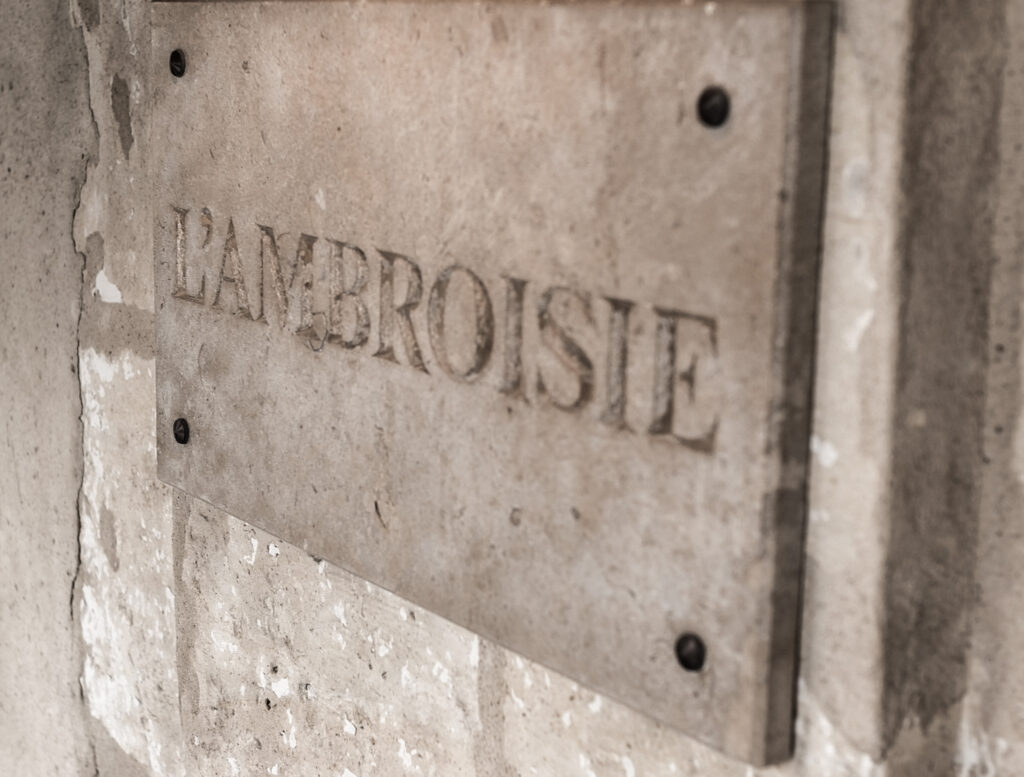
Nowadays things are very different. While it is still very difficult to get the highly-coveted third star, many three star restaurants are not worth the special trip. This is the bad news. But the good news is that there are still quite a few great product-driven destination restaurants. They are simply not captured by the criteria used by Michelin. If I give examples from Spain, I owe most of my most memorable dining experiences to friends’ recommendations. In Catalonia, Josep Vilella’s guidance led us to Ca L’Enric (with only one star), where we had an incredible becada meal; Simpson in Llafranc (not in Michelin) for stunningly simple and magnificent pork feet; Hispania in Arenys de Mar (no longer in Michelin) for the world’s best “pa amb tomaquet” (pan with tomatoes) and ganxet bean salad; and Sant Pere del Bosch in Lloret de Mar (not in Michelin) for a two star level meal which ended with an amazing aged ribeye steak. In the Basque region of Spain, my most memorable dishes were not in the region’s four restaurants which receive the highest accolade of three stars from Michelin, but have been at Etxebarri (with only Michelin one star), the great Elkano for its turbot, Donostia’s Ibai (not in the Michelin guide), and the one star Zuberoa. If I had only looked at Michelin, I would not have made the two day trip to Asturias where I had a memorable meal and stupendous ”fabada asturiana” at Casa Gerardo and some of the best seafood this planet can offer at Gueyu Mar (just mentioned in Michelin), all cooked with precise grilling techniques tailored for different ingredients to highlight and not to mask their pristine flavors. When in Madrid, had I only relied on Michelin and not on Rogelio Enriquez and Pedro Espinosa, I would not have had unforgettable game dishes at Horcher; my best Galician blonde ribeye steak to date at La Taberna de Elia; the memorable fare at Sacha; the hearty internal organs cooked imaginatively at Viridiana; and timeless classics and good sauces at Zalacain.
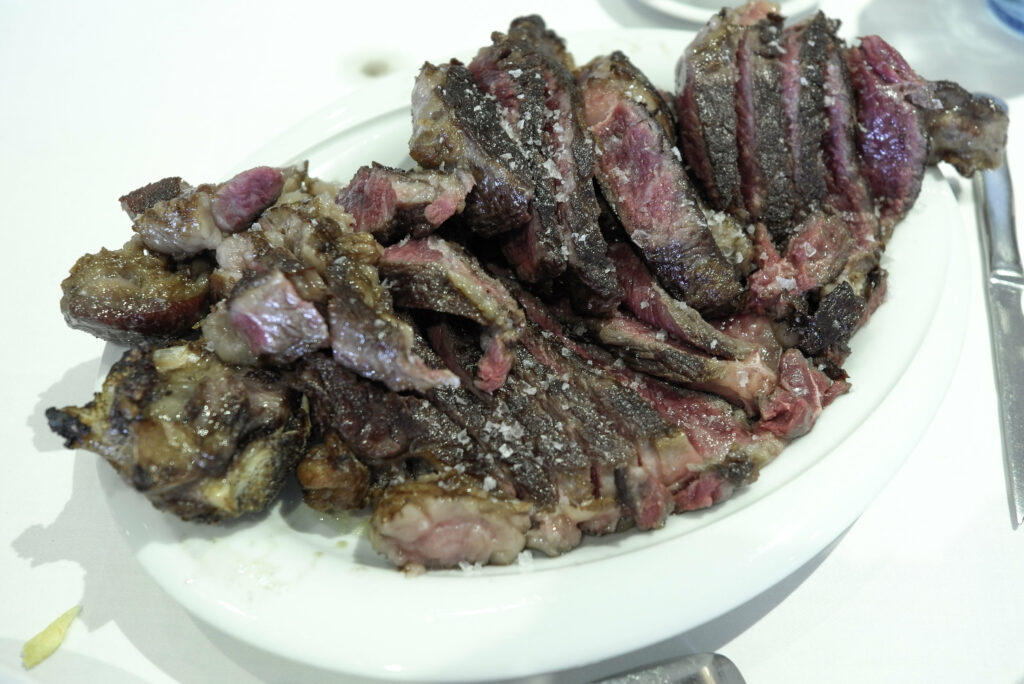
When I think that the last two restaurants lost their only star, and that during the last month a two-star restaurant in Los Angeles, a one-star in San Francisco and another one-star in Yountville in Napa Valley served inedible dishes due to low quality ingredients and/or with blatant over- or under-seasoning, I can’t help but feel that the Guide has lowered its standards. When I trust the Guide and am served re-heated dishes with some parts of a single piece of meat served cold in an American restaurant, I feel infuriated in view of the fact that Alice Waters’ Chez Panisse, an epitome of ingredient quality and precise cooking with subtle seasoning, has lost its only star.
One would not have worried about this had Michelin not had the power and prestige it enjoys. Especially for a restaurant in a non-touristic destination, Michelin stars can make the difference between staying afloat or going out of business. Chefs look at other multiple starred restaurants and attempt to tailor their cooking to receive high ratings from the inspectors. Unfortunately, quite a few of the two and three-star restaurants have opted for a simple formula that has a higher chance of recognition from the Michelin Guide. A friend, Robert Brown of New York, who is a veteran gastronome and who has had the privilege to experience the culinary marvels and extreme generosity of the great French chefs of the last quarter of the 20th century, is not off the mark when he says:
“Fine restaurant dining is being turned into a pursuit in which the cuisines of countries, let alone regions, have virtually become unrecognizable because of sous-vide cooking; many course tasting menus; and compositions on the plate whose visual aspects are derived not from the main products themselves, but from flower petals, herbs, eye-droppers and paint brushes.”
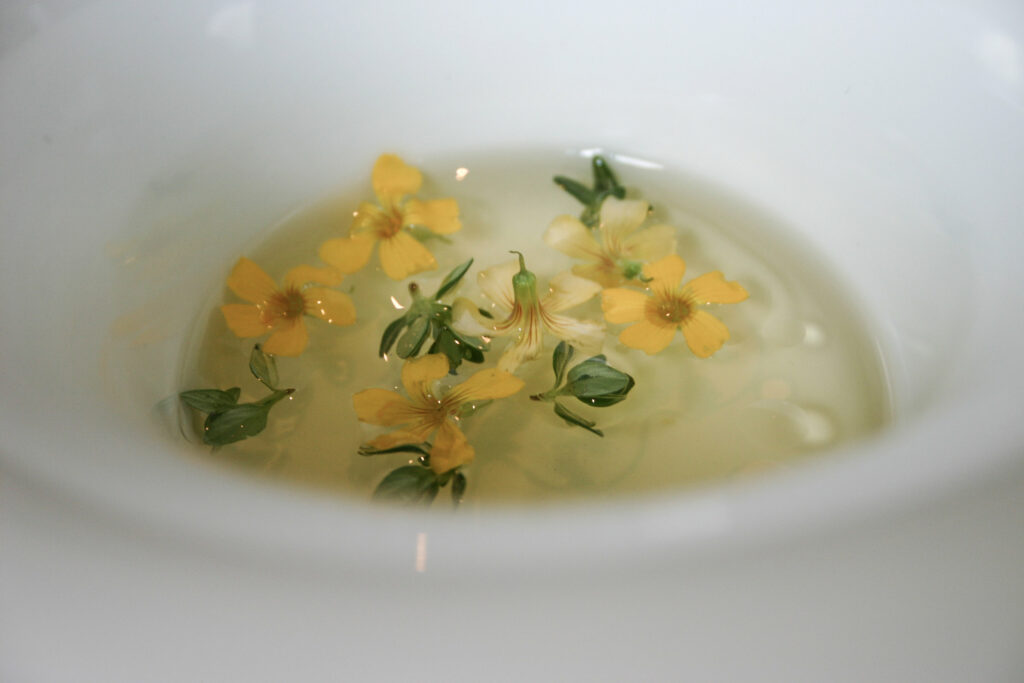
Personally, I am not against herbs or flower petals but I lament the gradual disappearance of classic sauces and mouth-watering classic dishes which may not be cooked sous-vide. I should add that many restaurants that are promoted to three stars shy away from shocking their increasingly international, ‘one time in a great restaurant’ clientele, by not showcasing rich, fat and unfamiliar food, but rather, for example, by serving pork belly that is trimmed not to taste fat and a single percebes that is deshelled and chopped up into pieces not to look ‘ugly’.
As the new Michelin has the same mindset as the San Pellegrino World’s 50 Best Restaurants when it comes to rating restaurants, the best of traditional restaurants and regional cooking is declining all over the world, with the notable exception of Japan, where the guide actually does a good job and salutes traditional fare, such as sushi houses, with three stars. One cannot understand why Michelin accepts to give high rankings to sushi and tempura houses, but shies away from acknowledging the excellence of many labor intensive and traditional dishes in its Western guides. Examples abound, such as “lievre a la royale”, “boeuf bourgignon”, “pithiviers de gibier”, “tagliatelle bolognese”, “trippa alla romana”, “fabada asturiane”, “kokotxa pilpil”, “cordero lechal”, “paella” and so forth. The cumulative result is that we just have fewer and fewer places that prepare such dishes with care, use and present great products, and respect tradition. One can now eat confused fare that is mistakenly-called paella in many restaurants in Spain, but a paella in Paco Gandia in Alicante is a masterpiece and is qualitatively different. I contend that the best paella of the planet deserves three stars in the sense that one should go out of one’s way to taste it.
Take the example of Gerard Besson, a truffle specialist, in Paris. His “petit pain seche a la graisse de canard et garni de bons morceaux roules” (dried baguette with duck fat and about 80 grams of truffles bathed in a delicious port wine sauce reminiscent of the heyday of the French cuisine) that he was offering when Michelin demoted him, is still inscribed in my palate as one of the two best truffle dishes I have had in the last 15 years. He also cooked some of the most labor intensive and hard to prepare and delicious, classically inspired dishes, such as “oreiller de la belle aurore”, a crusted multi-layered dish that harked back to the dawn of French gastronomy and is unlike anything one can find today. When Michelin was a private company, astute inspectors awarded him with two stars. He never changed his cooking, but he lost both of his stars and closed down his namesake restaurant.
Taillevent in Paris, where Alain Soliveres is cooking some of the most harmonious and well-thought- out classics, which are rich and complex but not heavy, has also lost its third star. Eric Briffard, the previous chef of Le Cinq, the luxury restaurant of the grande-luxe hotel George V, prepared a plat d’anthologie: Pithivier de Perdreau Gris, Canard Colvert, et Grouse au miel du chataigner, fruits d’automne, jus presse a l’Armagnac (an enclosed hand-crafted pie with young gray partridge, wild mallard duck and grouse with a chestnut honey glaze, autumn fruits and juice pressed with Armagnac and a complex sauce). Obviously such a classic dish for four cannot be cooked sous-vide. Briffard never received the third star and had to leave George V in favor of more modernist Christian le Squer, the former three star chef of Ledoyen. I have been a loyal client of Ledoyen, and I think highly of Le Squer, but my last two meals at Le Cinq under his reign were disappointing, with considerably less work exhibited in his classic dishes and less than impeccable seafood. He is the newest three star in France which makes one think that the Guide privileges the publicity value of announcing a new three star restaurant each year upholding the highest standards in cuisine. Apicius, a bastion of hearty and robust bourgeois cuisine, at which chef Jean-Pierre Vigato dares to serve old time bistro classics, such “pied du porc” and “tete de veau” and where many great dishes are offered for two people, was demoted to one star. The other side of the coin is that young chefs learn and care more about aesthetic design than taste. Michelin rankings are like signals to young chefs, and they function as incentives and disincentives. The cumulative message is clear: the new inspiration for the aspiring chefs should be Japan and Scandinavia, and not their own traditions and heritage. It does not come as a surprise that it is now harder to find a great “pithivier du gibier”, “queue de boeuf”, or properly roasted whole duck in Paris than scallops with kiwi, daikon radish and dehydrated olive ash!
All this does not amount to saying that everything that is traditional should be upheld without any reservation. For instance, I have strong doubts that a “suquet” or “bouillabaisse” can ever be great when different fish are cooked in the same pot and for the same duration. I salute Michelin for according three stars to Passedat’s Petit Nice in Marseille, where I have eaten the best bouillabaisse to date. The chef respected the concept, but redesigned it and turned it into a masterpiece. Understandably such dishes take a long time to create and perfect. The greatest chefs of the world perform their profession as artisans and artists at the same time, which is to say by infinite trials and errors to perfect a dish. This contrasts with the present situation when a chef who calls himself an “artist” is encouraged to constantly “create” small dishes. Even if, say, five out of ten dishes that are offered in a long menu degustation are still half baked and at the preparatory-conceptual stage, such chefs are not shy to serve them. This is because Michelin inspectors, who punish restaurants that serve mouth-watering classic dishes, display a bias in favor of sous-vide cooking and small portions that comprise multi-course tasting menus. They don’t seem to be too selective when it comes to differentiating between a truly great experimental and inventive dish and one that lacks balance and depth.
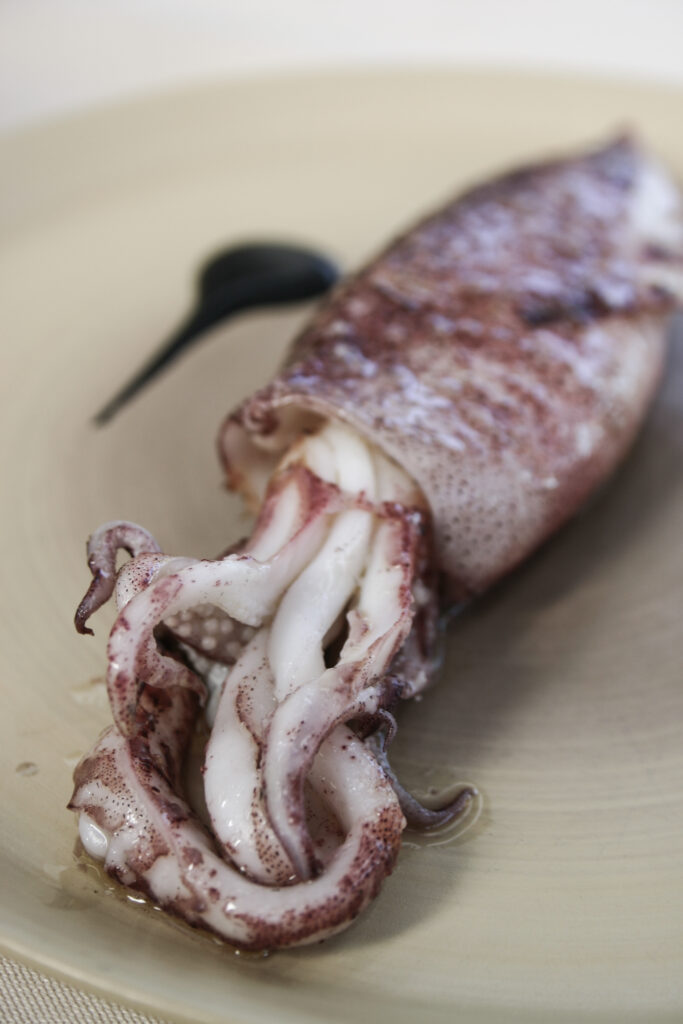
I am only speculating because Michelin never makes public the criteria it uses in ranking restaurants, and since the inspectors are unknown, we cannot judge them like we can pass judgments on the gastronomic critics of newspapers and magazines. So I can only judge by the results, and several problems make me worry. One is the relative lack of recognition of great product-driven restaurants of Europe. Let’s again give examples from the Basque region of Spain. The chefs in Ibai, Etxebarri, Elkano, Horma Ondo, Landa in Mendaro, and many other restaurants work with great products. I contend that they use better products on the average than the four three-stars that I know well in the region. The first three are very refined and precise in flavoring. Etxebarri is one of the best restaurants in the world, and Elkano’s legendary turbot is such that in a very recent visit to Paris, Bruno Verjus of La Table who cooked one of the two best turbot I have had in Paris (the other was at Arpege when he cooked it whole with vin jaune), told me: “well, it is not at Elkano’s level, and we, the French, should learn from Elkano”. It is clear to me that what comes across on my palate and Monsieur Verjus’ as very refined and intricately seasoned is perceived by the inspectors as relatively simple and easy to replicate. I can only surmise that the evaluation-sheet criteria given to Michelin inspectors must be similar to those for wine evaluations. That is, even the best criteria honed through the years are as good as the person who makes use of it, and such codification does not prevent massive disagreements. For many less-gifted or less-experienced individuals, such criteria may even function like a straightjacket that constrains and prevents them from making a holistic judgment based on a comparative evaluation and experience.
The absence of a comparative perspective also renders the interpretation of stars a futile exercise across countries. Inarguably the quality of ingredients is higher and cooking traditions are more entrenched in some regions and countries than in others, and, contrary to the claims of Michelin, the evaluations by Michelin, whatever their worth, does not allow us to make cross-country judgments. I will even go out on a limb and argue that Michelin has an anti-French bias: several non-starred bistros in Paris deliver higher quality fare than multi-starred New York restaurants. Similarly, some one-star restaurants, such as Yam’tcha and Septime in Paris, deliver superior products and more harmonious cooking with depth than most two or three star restaurants I have tried in the States.
One often hears from insiders that Michelin does not award high stars to many restaurants, especially in Spain and Italy, because they look for a certain style of service. I have been in about two thirds of the Michelin three star restaurants, some multiple times. The service in many three stars lack authenticity and feels fake-nice, over the top. Whereas in many restaurants mentioned in this article, as well as in others, there is often genuine warmth or at least a sturdy sense of pride and professionalism. My hunch is that the majority of diners share similar feelings. Criticism of Michelin for the long delay in removing stars is also well founded. I have noticed about at least an eight year time lag between a famous restaurant that does not deliver and the removal of a star (for instance for Per Se in New York). A corollary of this problem is that many three star restaurants that deserve to be promoted make their cooking more safe, standardized, and less offensive to popular taste when they are rewarded their third star. That is, as the globetrotter celebrity chefs start living in the airplane, the staff delivers good service, an element of theater, and fine cooking to which nobody would object. As a result, even if the cooking was superlative when the restaurant had two stars, some restaurants often become formulaic, and dishes are composed of a more narrow set of ingredients that are less likely to be offensive to those who seldom dine at the temples of gastronomy. And, as long as such restaurants don’t make major mistakes in execution, they keep their stars.
I cannot help but think that in the end the Michelin guide has compromised its relative autonomy when the Michelin Company became a public firm. I am not claiming that it is simply a political tool, but it is responsive to the needs and priorities of the corporate officers who are accountable to shareholders. There is still sufficient independence to reject publishing a guide in a city that inspectors think does not have a sufficient number of worthy restaurants. But when a new city is included in the guide, the bias is towards including as many restaurants as possible to the detriment of the criteria which made the guide prestigious and trustworthy in the past. A corollary of this “dumbing down” process is the increasing PR and visibility and the proliferation of movies, like “Burnt” and “The Hundred-Foot Journey,” which uphold and reinforce the myth of Michelin as an elite institution.
In the meantime Michelin is stronger than ever in the global age. As the guide covers an increasing number of countries and cities, there are more three-star chefs. They constitute a strong and well-entrenched lobby, dominate the world of gastronomy, and define the rules. The so-called “gastronomic” restaurants start becoming more like one another with the free flow of talented interns who move from one to another. Only a minority of the three-star restaurants choose to stay outside of the game and chart their own course. Many clients of three-star restaurants are more than happy to have dined in a temple of “fine dining,” and at the same time Michelin is very responsive to modern taste and preferences. More alarmingly it is now the exigencies of the restaurant trade and the preferences of celebrity chefs in favor of using easily-standardized sous-vide preparations and multi-course tasting menus (quite a few three star restaurants do not even offer a la carte) that have become the reference point for “fine dining” and will continue to shape the aspirations of young chefs. Michelin simply endorses this trendy agenda, which has its merits, but rules out far too many cooking styles and taste sensations. The irony is that Michelin is no longer an “elite” institution, as the inspectors’ palate gradually approximates those who seldom dine in three star restaurants and who want to be dazzled by colorful presentations so that they can capture the moment in cellphone photos. Today’s Michelin is both populist and popular. It has found the “ideal” target consumer for which it is looking. It is still the emblem of France, but a France responsive to market signals, rather than a sensual, intellectual, introspective, and hedonistic France.



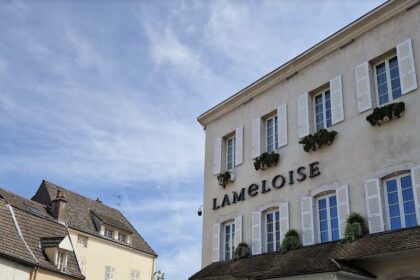

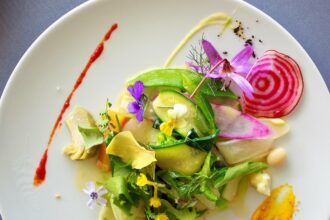
I agree 100%. Too much of food has become visual and cool and Michelin focuses on that as opposed to what should matter – how it tastes. Michelin is a lead source at this point. Not a guide.
Very well written!
Agree with everything except ‘spaghetti bolognese’ – tagliatelle or pappardelle bolognese please!
Dr Milor, it is great to see your blog up and running again and also to read your first post in quite a while. I want to thank you for your review on In de Wulf a couple of years ago which inspired me to make my own trip last month. What a recommendation! It is going to be my 2016 meal of the year for sure! Based on what you written, I expressed my interest in the lobster and the pigeon dishes. The kitchen obliged, and this pair of dishes made every minute of my 17 hour trip to Belgium worthwhile. I want to highlight, especially, the dry-aged pigeon which tasted deep, minerally, and complex and reminded me of the fantastic aged beef chop I was served in Etxebarri last year. While reading your article, it struck me that while you and I (and others) enjoyed the pigeon, I can nevertheless understand how some casual diners will find it ‘weird’, ‘unusual’, and ‘too strong’. From the restaurant’s perspective it is probably easier to leave it off the menu until some food-crazed traveller asks for it than to risk offending sensitive palates. I wonder which category did the Michelin inspectors fall into?
Brilliant, Vedat, as always, and I could not agree more.
I’m pretty sure that "sensual, intellectual, introspective, and hedonistic" is exactly how you like to think of yourself.
The fact remains that Michelin have decided to award stars based on a chefs age,this is a fallacy on their part,age should have no place in any of it.
Restaurant story in London is a prime example of how the guide has more interest in promoting Michelin via the backs of self promoters who are terrible cooks. The food here is shockingly bad and only Andy Hayler had the wisdom to call it as it is.
It seems in contemporary times if you hire a PR firm,fill your restaurant with 2 chefs for every seat and call up Michelin with enthusiasm you can serve any standard of food and receive a star even if it’s close to poison.
Do you special request your game pies from the restaurants in Paris you visit? Is this an unwritten protocol to get this dish? Thanks! Great post!
I agree 100% (for what it’s worth).
I agree but it is still a list of “selected” restaurants which can be used as a reference guide book for the ones who doesn’t have access to useful information on a trip to an unknown city. Obviously, the list had lost its credibility due to the given reasons but at the end of the day we will not have a catholic marriage with the restaurant of our choice. We will have a dining experience whether it deserve those stars or not. Thanks for this nice article.